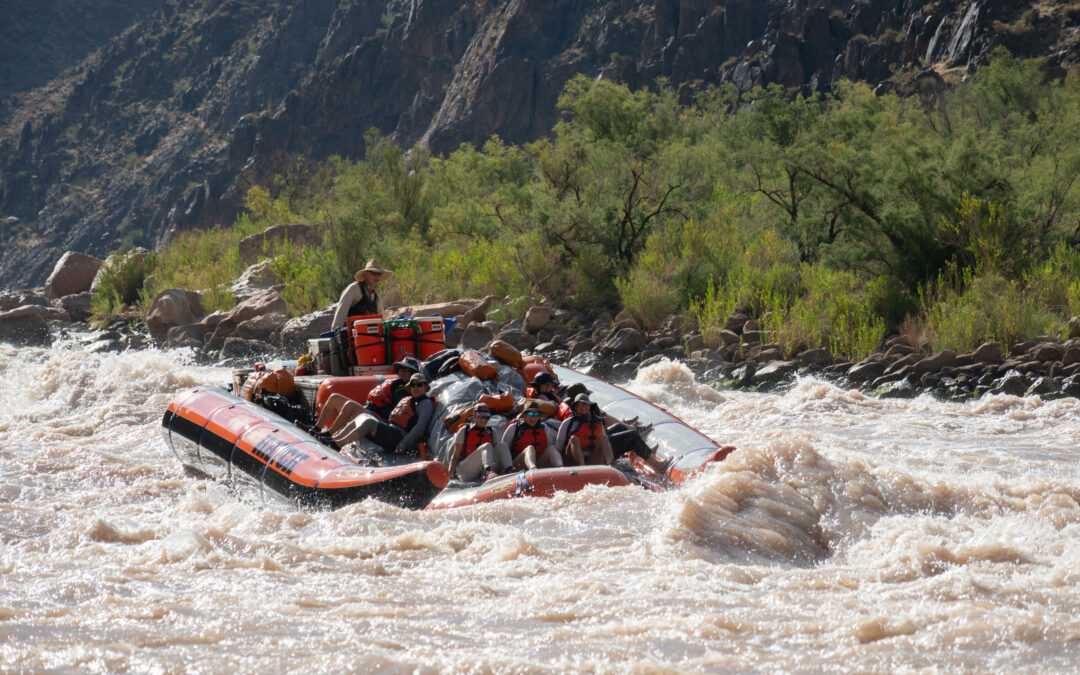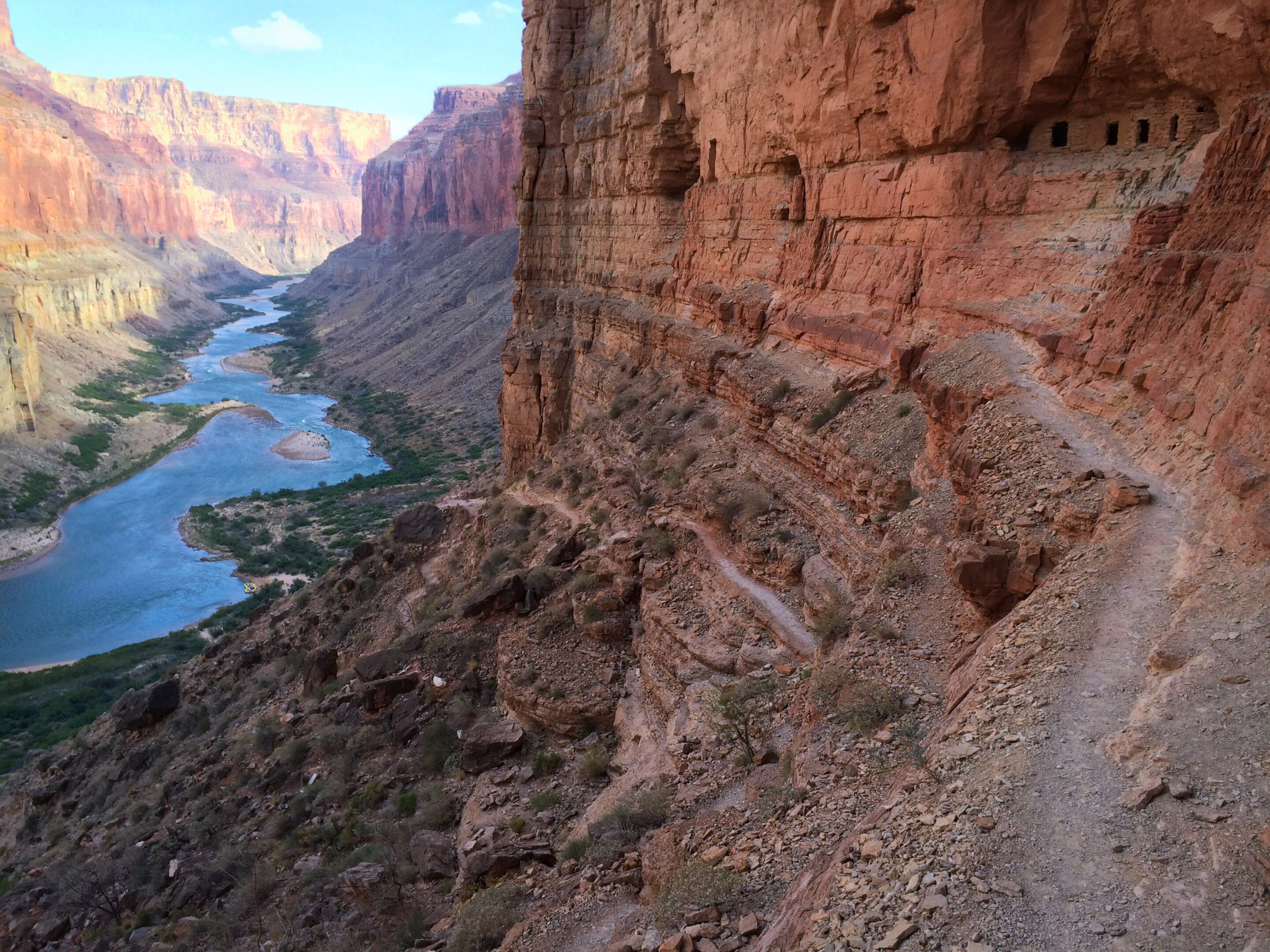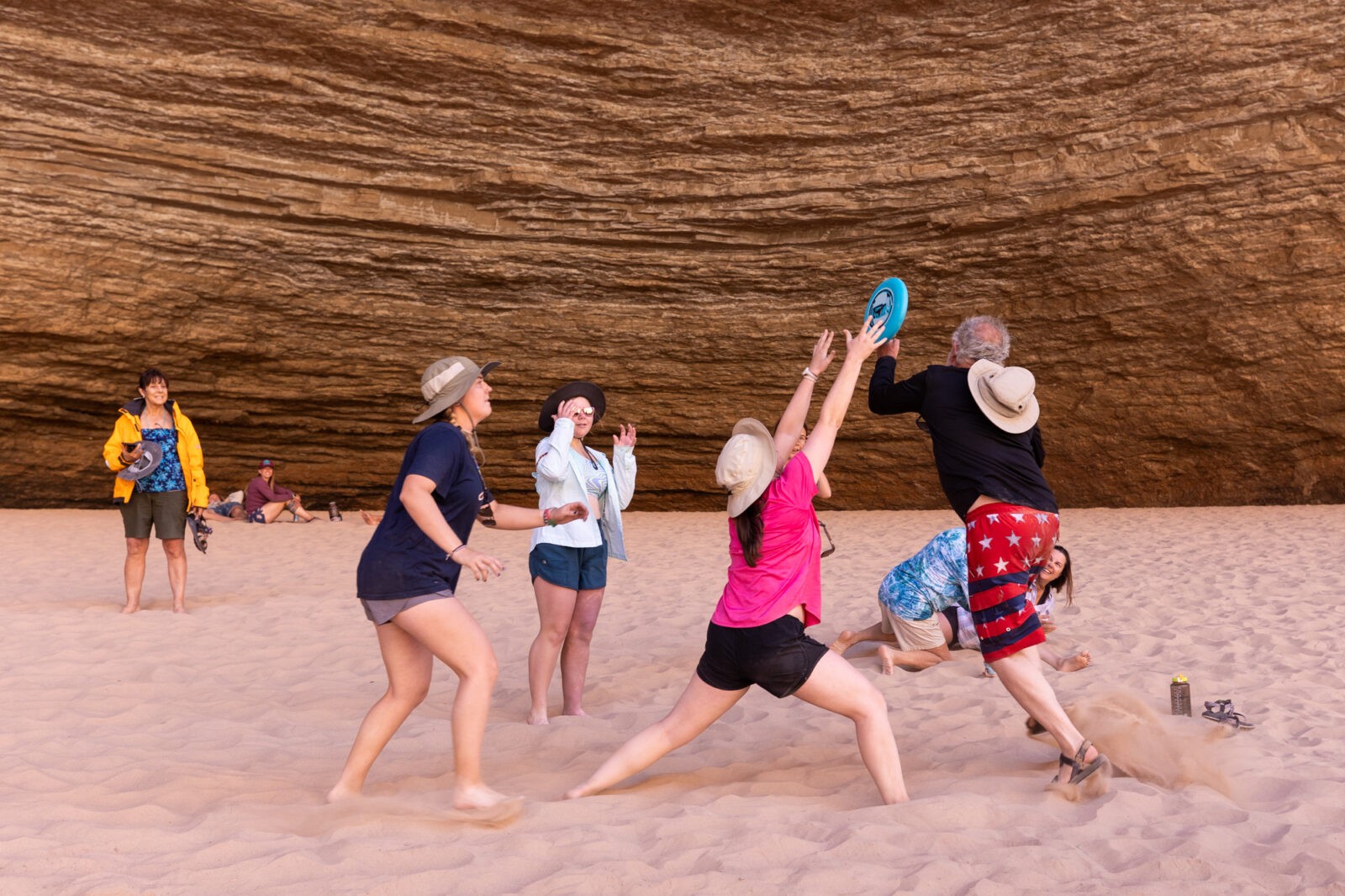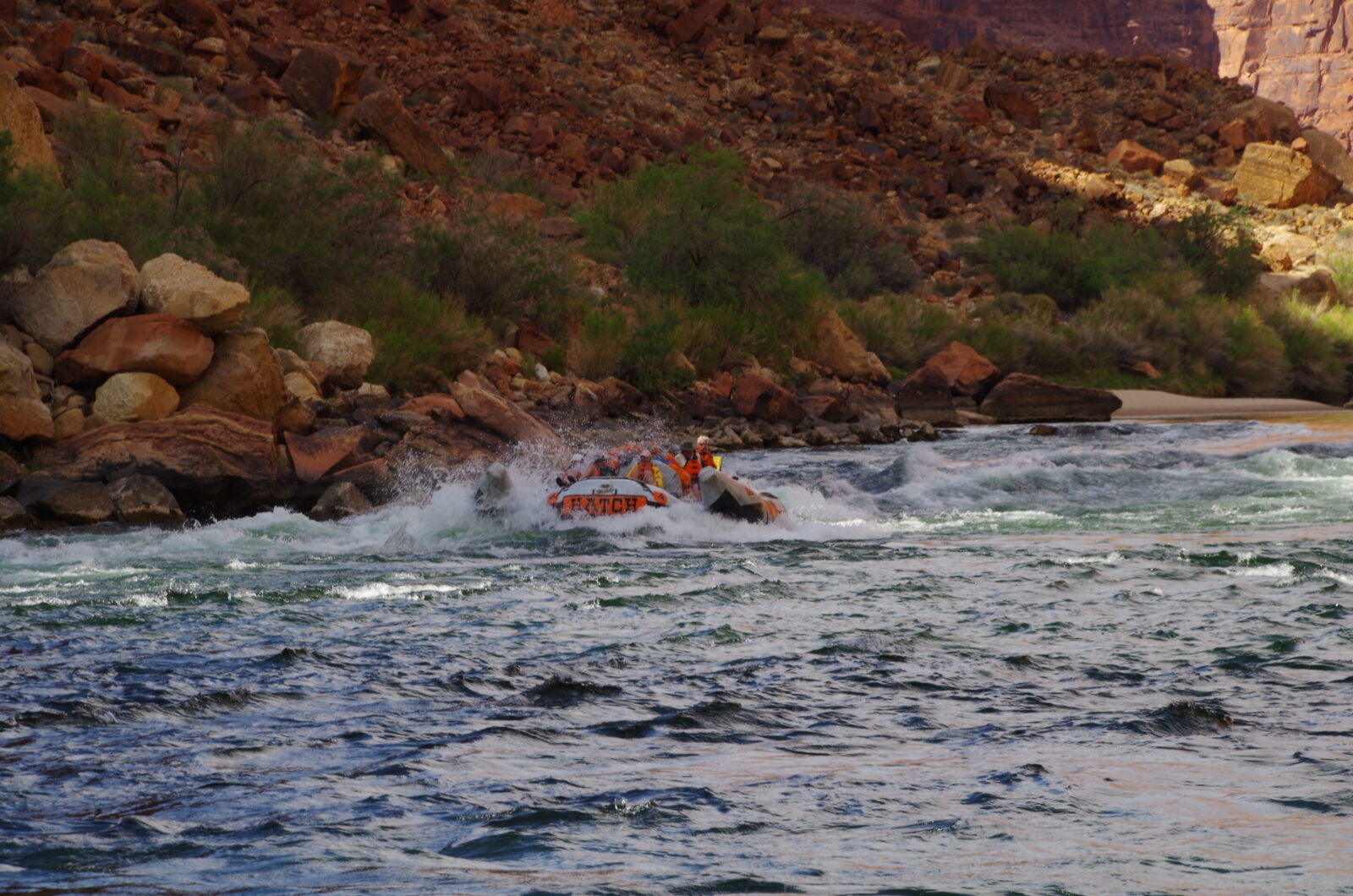6 Reasons Hatch Was Selected for Newsweek's Best Whitewater Rafting Adventures Who provides the best whitewater rafting experience...


Every part of Grand Canyon is amazing—there’s no denying that. But, each section of the canyon has its own unique set of qualities that make it worthwhile. Here are some of the things we love about upper canyon trips in Grand Canyon:
Cliff Dwellers
We love getting to Marble Canyon the day before launch, hanging out beneath the Vermilion Cliffs, and settling in for the upcoming adventure. PLUS the food at Cliff Dwellers Restaurant is fantastic!

A group of people playing frisbee in Redwall Cavern in Grand Canyon. Photo credit: Megan Ford-Fyffe
Marble Canyon
The first portion of Grand Canyon that you travel through is called Marble Canyon – named by John Wesley Powell because the limestone there reminded him of a many-colored marble. We love how as you get deeper and deeper into the canyon, the different layers of sedimentary rock build, forming increasingly tall walls around you. In this section of canyon, you truly feel how remote Grand Canyon is.
The Roaring Twenties
Beginning at mile twenty, there is a rapid almost every mile for 10 miles. We love the anticipation of when the next one will come and how big it will be. (This section of the canyon can be shady if you run it in the mornings, so consider wearing your rain gear for this stretch!)
Redwall Cavern
Cut into the Redwall Limestone, this huge cavern is the perfect stop for lunch, fossil hunting, or just playing in the sand. Powell estimated that Redwall Cavern could hold 50,000 people. (He did tend to exaggerate, though!)
Nankoweap Granaries
Have you ever been somewhere and thought about all the people who were there before you? These Ancestral Puebloan granaries have a history that dates back around 1,000 years! Visiting this place is like touching a piece of history (but not literally— please don’t touch the granaries!)
BONUS: The view downriver from the Nankoweap Granaries trail is incredible and an extremely popular spot to stop and snap a photo.
Hance Rapid
This rapid features the biggest river drop in the canyon! We love hanging on tight through this wild ride.
The Little Colorado River
The bright blue waters in this Colorado River tributary are absolutely stunning, so have your camera ready! Upstream, the rocks form a natural water slide that is tons of fun to play in when the water is clear.
The Bright Angel Trail
If you love to hike (like we do!), the Bright Angel Trail is amazing. Climbing out of the canyon and seeing the world around you change with the elevation is an experience worth having. Make sure to turn around once in a while and see how far you’ve come. This hike is INTENSE, so you’ll need to prepare in advance!
For more info about Grand Canyon’s thrilling rapids and exciting stops along the river, check out our Short Guide to the Grand Canyon.
Our upper canyon trips launch from Lees Ferry. We provide lodging the evening before your trip at Cliff Dwellers Lodge (or another nearby lodge) in Marble Canyon, Arizona – about a 20-minute drive from Lees Ferry. The trip ends with a 9.5 mile hike out of Grand Canyon via the Bright Angel Trail with over a 4,000 foot elevation gain. The Bright Angel Trail ends at the South Rim of Grand Canyon.

A Hatch raft going through a rapid. Photo credit: John Dillon.
To get the full details on upper canyon transportation options, review the Lodging and Transportation section of the trip packet for any of our upper canyon trip options.
Upper canyon trips are available on motorized, oar-powered, and hiking-focused options. Explore our trips to determine which option is best for you.
6 Reasons Hatch Was Selected for Newsweek's Best Whitewater Rafting Adventures Who provides the best whitewater rafting experience out there? According to Newsweek’s readers, Hatch does! That’s right—Hatch River Expeditions was one of 10 rafting outfitters chosen as...
June is one of the most popular months for rafting in the Grand Canyon, here are a few reasons many of our guests decide to go in June!
Though she was a major contributor to southwestern architecture, Mary Colter is still a relatively unknown figure in American history.